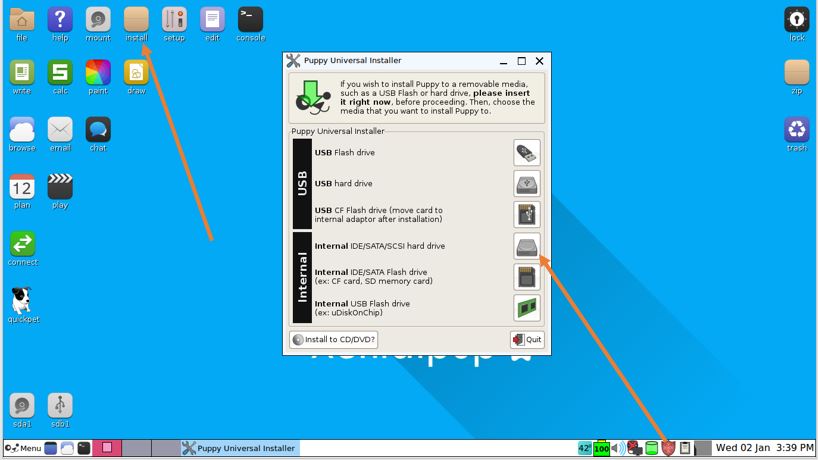
When I try to boot from the hard drive (and not the USB) I get an error. A Puppy install to your hard drive will certainly boot faster and shut. Midi pop indonesia. In this video I show you how to install Puppy Linux to your hard drive. Hope you enjoy! If I've helped you in any way and you'd like to buy me a coffee, please click this link to do so: https.
Welcome to BleepingComputer, a free community where people like yourself come together to discuss and learn how to use their computers. Using the site is easy and fun. As a guest, you can browse and view the various discussions in the forums, but can not create a new topic or reply to an existing one unless you are logged in. Other benefits of registering an account are subscribing to topics and forums, creating a blog, and having no ads shown anywhere on the site. Or read our to learn how to use this site. As said above, you can install Puppy to a USB flash drive using Puppy's installer. In this scenario, you would also install a bootloader to your USB drive.
The Puppy installation on the USB would be the same as a Puppy installation on your internal HDD; only difference is the media you install it to. Another, easier option, is to use something like to create a live USB. If using Windows, click on the download link to download it. If using Linux, open a terminal and type 'unetbootin.' If it is already installed it will open; if it is not already installed, follow the instructions that will be provided in the terminal to download and install it. In this scenario, you do not have to install a bootloader.
To create a Puppy USB using Unetbootin: 1) Download your chosen Puppy ISO. 2) With your USB plugged in, open Unetbootin. Your USB should be automatically detected. 3) Press the button I have highlighted below, to select the ISO that you downloaded: 4) Press the OK button. 5) Wait for Unetbootin to finish writing to the USB. I wouldn't use ImgBurn.
While it's a marvellous Windows-based 'burner' app for Windows stuff, it has the failing that the majority of such apps have. It writes all file-names in upper-case letters. It's only for optical discs, too. Ergo, Puppy won't recognise it, since Linux tends to use all lower-case letters for system-stuff.and it's extremely case-sensitive, too. If you want to put a Linux ISO onto an optical disc, we recommend one tool over on the Puppy Forums above all others. Terabyte Unlimited's 'BurnCDCC'. It's very single-minded; it does one thing, and one thing only.it burns an ISO file to a CD/CVD.
And you must burn at the slowest speed possible, too; no more than 2x or 4x, tops. It doesn't seem to suffer from the usual Windows failing of the wrong case.  Just d/load it, unzip it anywhere you like, and run the.exe file inside. That's all there is to it.and I guarantee it will work.
Just d/load it, unzip it anywhere you like, and run the.exe file inside. That's all there is to it.and I guarantee it will work.

For USBs, either UNetbootin or Rufus will do the job. Edited by Mike_Walsh, 03 March 2017 - 07:25 PM.
Distros:- Multiple 'Puppies'. And Anti-X 16.1 ~~~ Compaq Presario SR1916UK; Athlon64 X2 3800+, 3 GB RAM, WD 500GB Caviar 'Blue', 32GB Kingspec PATA SSD, 3 TB Seagate 'Expansion' external HDD, ATI Radeon Xpress 200 graphics, Dell 15.1' pNp monitor (1024 x 768), TP-Link PCI-e USB 3.0 card, Logitech c920 HD Pro webcam, self-powered 7-port USB 2.0 hub Dell Inspiron 1100; 2.6 GHz 400FSB P4, 1.5 GB RAM, 64GB KingSpec IDE SSD, Intel 'Extreme' graphics, 500GB Seagate 'Expansion' external HDD, M$ HD-3000 'Lifecam'. Yes you can save changes to the Live USB.
When you create a live Puppy USB and boot your computer using it, when you come to reboot or shut down for the first time, Puppy will ask if you wish to create a save file or a save directory. Follow the prompts to create a save file or save directory.
With which file format I should format the USB? Fat32 works fine. Text files are saved in the save file / save directory.